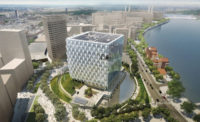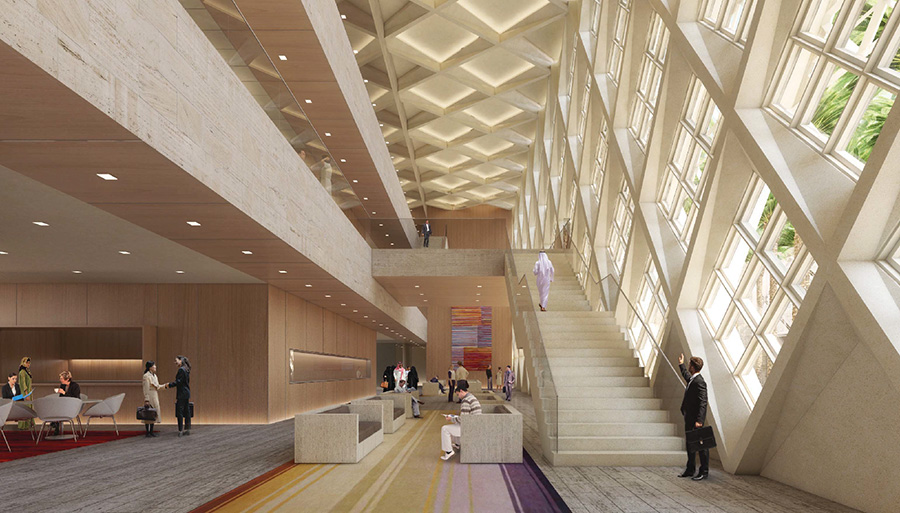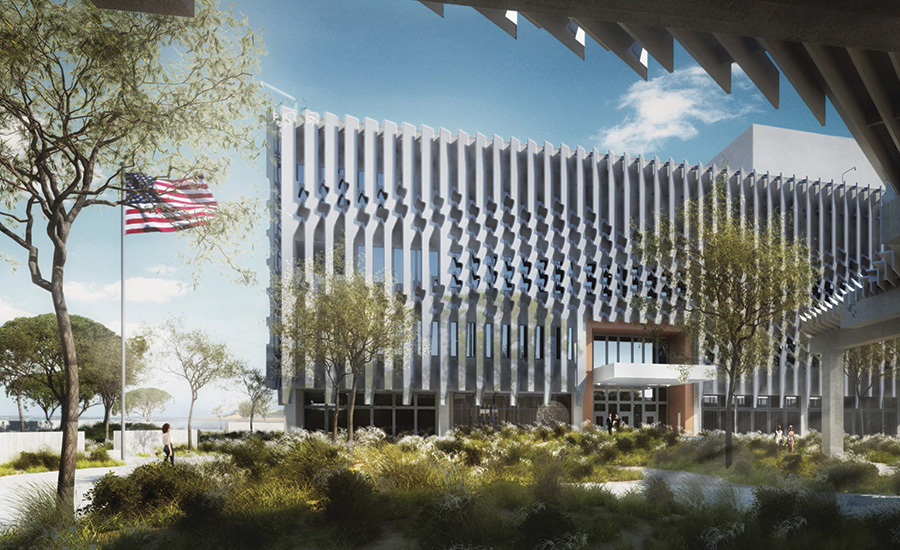Designing Diplomacy: Top Firms Selected for New U.S. Embassies
“I believe in the power of architecture,” says director of Overseas Buildings Operations.

U.S. Embassy
U.S. Embassy in Beirut, by Morphosis
Image courtesy U.S. Department of State

U.S. Embassy
U.S. Embassy in Beirut, by Morphosis
Image courtesy U.S. Department of State

U.S. Embassy
SOM is the designer for a new U.S. Consulate General in Dhahran, Saudi Arabia.
Image courtesy U.S. Department of State

U.S. Embassy
SOM is the designer for a new U.S. Consulate General in Dhahran, Saudi Arabia.
Image courtesy U.S. Department of State

U.S. Embassy
SOM is the designer for a new U.S. Consulate General in Dhahran, Saudi Arabia.
Image courtesy U.S. Department of State

U.S. Embassy
YGH and Allied Works Architecture has designed an embassy in Maputo, Mozambique.
Image courtesy U.S. Department of State

U.S. Embassy
Davis Brody Bond and Tod Williams Billie Tsien have completed their design for a new Mexico City Embassy.
Image courtesy U.S. Department of State

U.S. Embassy
Michael Maltzan’s design for a new residential annex in Paris.
Image courtesy U.S. Department of State

U.S. Embassy
Michael Maltzan’s design for a new residential annex in Paris.
Image courtesy U.S. Department of State









After reviewing the portfolios of six finalist firms, the State Department has chosen Studio Gang Architects to design a new U.S. Embassy in Brasilia. The Chicago-based firm joins a number of highly regarded firms designing embassies for the department’s Bureau of Overseas Buildings Operations (OBO), including KieranTimberlake, whose embassy in London is scheduled to open early next year; Morphosis, whose embassy in Beirut is in the final phases of design; and a joint venture of Tod Williams Billie Tsien and Davis Brody Bond, who have completed their design for a new Mexico City embassy.
The list doesn’t end there: New York architects Marion Weiss and Michael Manfredi are preparing designs for an addition to the embassy compound in New Delhi, and YGH and Allied Works Architecture have completed designs for the embassy in Maputo, Mozambique. Ennead Architects is also designing a new embassy in Ankara, Turkey; Boston-based Ann Beha Architects, a major rehabilitation of the Walter Gropius-designed embassy in Athens; and Michael Maltzan, a Marine Security Guard residential annex in Paris.
Lydia Muniz, director of OBO since 2012, says she is trying to put the days of standardized embassy buildings behind her. In the post-9/11 era as the department rushed to replace buildings considered insecure, it relied on standardized designs that have often been described as fortress-like and ugly.
“The previous generation of embassy buildings may have met the security concerns, but they did nothing to communicate our values,” says Muniz, adding, “I believe in the power of architecture.”
In 2011, Muniz created the OBO’s design excellence program, renamed Excellence in Diplomatic Facilities in 2013. Casey Jones, who had run a similar program for the General Services Administration, joined the Bureau as deputy director in 2013. The next year several members of the House Committee on Oversight and Government Reform blasted the bureau for putting appearance over safety, a charge Muniz vigorously denied.
The Brasilia embassy will replace the 1970s U.S. embassy complex, designed by the firm Henningson, Durham, and Richardson in a clean Corbusian style appropriate to the modernist city. The 12-acre site was landscaped by Roberto Burle Marx, the seminal Brazilian designer (also the subject of a show at the Jewish Museum in New York beginning May 6).
Studio Gang could not comment on the project.
For the Brasilia embassy, a State Department panel reduced an initial list of firms to just six: Diller Scofidio + Renfro, Morphosis, Pelli Clarke Pelli Architects, Rafael Viñoly Architects, Steven Holl Architects, and Studio Gang. The panel followed a two-stage process, first examining the qualifications of each firm’s lead designer, then the capabilities of the entire firm. Muniz says she prefers that system to full-on architecture competitions, which she says require architects to do a lot of unpaid work.
The last time OBO did a full competition was for the forthcoming KieranTimberlake-designed London embassy. A field of 37 firms was narrowed down to four (including Pei Cobb Freed & Partners, Morphosis, and Richard Meier & Partners Architects), who then spent almost a year developing proposals.
With Beha, Billie Tsien, Marion Weiss, and now Jeanne Gang, there seems to be an increase in the number of women designing U.S. embassies.
“There wasn’t a deliberate effort to involve more women, but I’m very happy that it turned out that way,” says Muniz.











